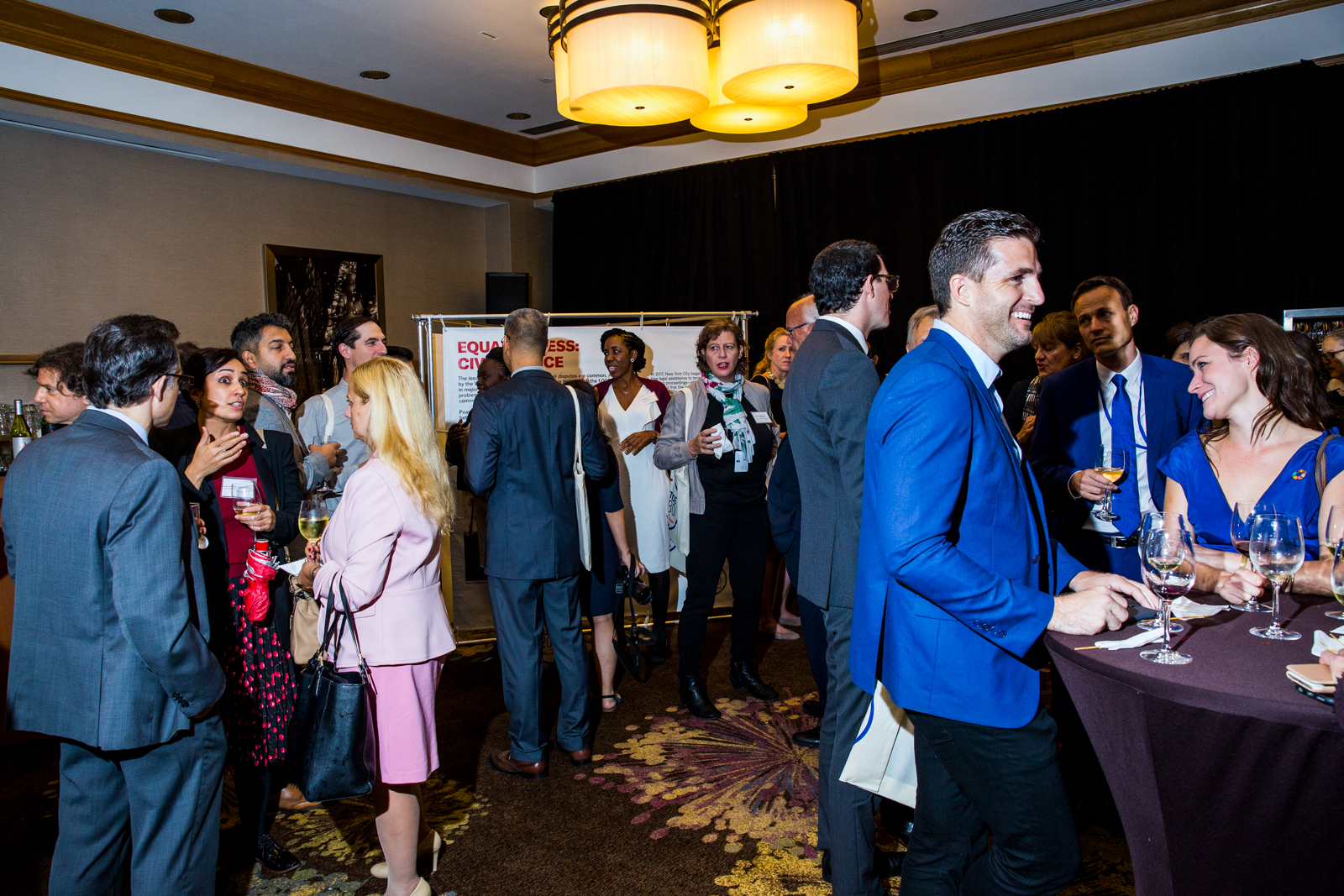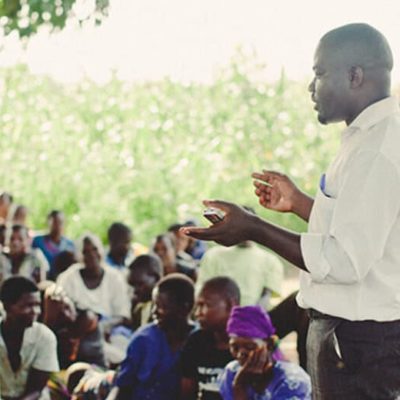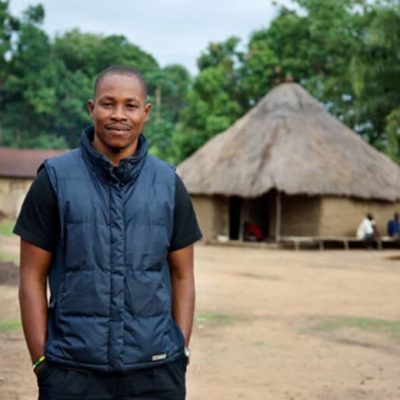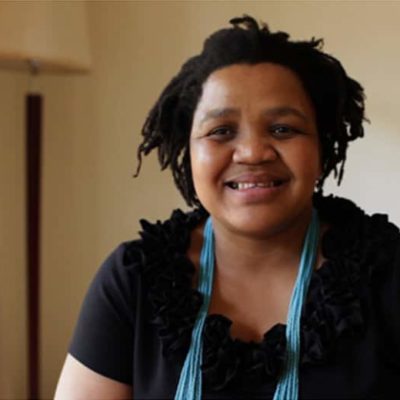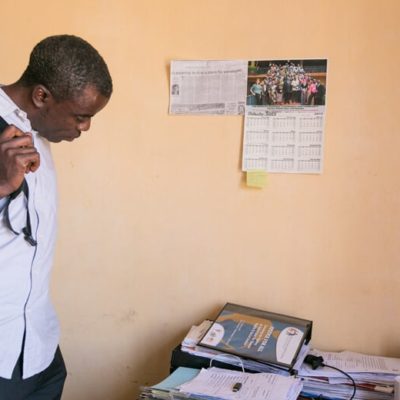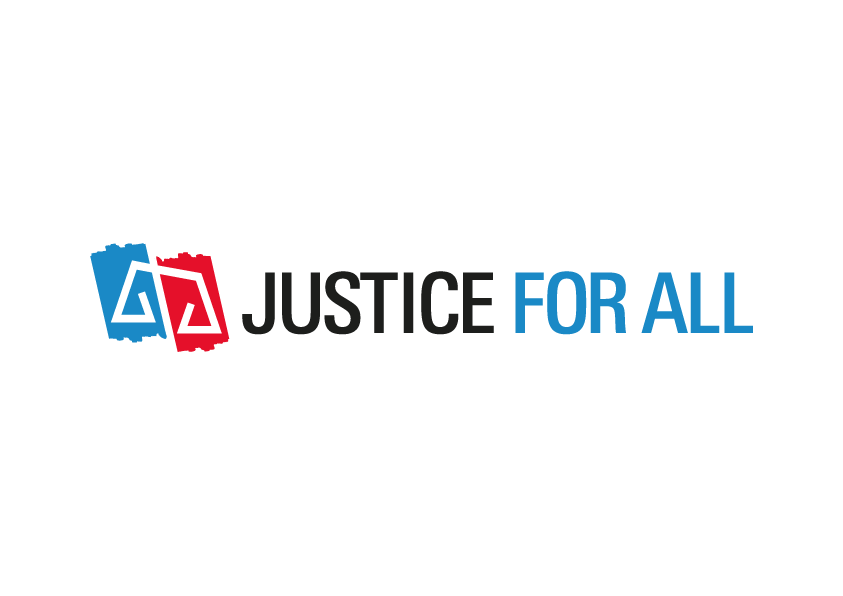
Creating the Brand
Our strategy included creating a separate visual brand to give the campaign a distinctive identity outside of the Grassroots Justice Network. A third-party branding company worked with Namati staff and members of the network to come up with the campaign name, and to develop brand guidelines.
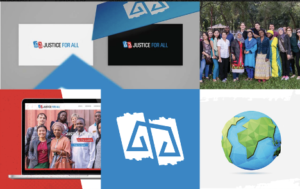
The voice of our campaign aimed to be inspiring, action-oriented, convincing, urgent, positive, simple, global, clear, confident, inclusive, expert, professional, engaging, understanding, and rooted in grassroots experience. We sought to position grassroots justice defenders as the “heroes” of this campaign, the ones on the frontlines driving forward an urgent call for action.
 The campaign brand promoted a spirit of partnership, highlighting not only the voices of grassroots groups but also decision-makers and justice leaders who were taking action to increase access to justice. We recognized the need to create allies in power who would champion Justice For All and did not want the tone of our brand to cause friction. However, when necessary, the campaign would raise attention to specific cases where governments or other actors were committing gross injustices or hindering reform.
The campaign brand promoted a spirit of partnership, highlighting not only the voices of grassroots groups but also decision-makers and justice leaders who were taking action to increase access to justice. We recognized the need to create allies in power who would champion Justice For All and did not want the tone of our brand to cause friction. However, when necessary, the campaign would raise attention to specific cases where governments or other actors were committing gross injustices or hindering reform.
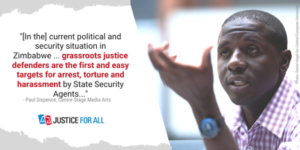 The brand was created to be flexible. Organizations were able to tailor messaging to be context-specific under the campaign brand without any kind of sign-off and did so frequently on social media. However, with our coalition partners, we developed key messages and products to ensure a level of brand consistency.
The brand was created to be flexible. Organizations were able to tailor messaging to be context-specific under the campaign brand without any kind of sign-off and did so frequently on social media. However, with our coalition partners, we developed key messages and products to ensure a level of brand consistency.
Framing the Cause
The campaign team helped to frame the cause and to create a common language that all members could draw from in their advocacy.
We collectively set out the following core messaging:
- Access to justice is important. We cannot address the world’s biggest challenges without it.
- Grassroots justice defenders, and their legal empowerment methods, are vital to achieving justice for all.
- But their work is at risk. They are persistently underfunded and increasingly under attack.
- World leaders must take action to fulfill their SDG16 promise of delivering equal access to justice to all by funding and protecting grassroots justice defenders.
We used simple and easily understood concepts, and terms agreed to in the SDGs, including access to justice for all, to communicate priorities to our target audiences. The term legal empowerment was not used in the campaign’s top-tier messaging because there was no consensus about what legal empowerment was, who carried it out, and it was not mentioned in the SDGs. The concept of legal empowerment was defined more commonly as people’s ability to know, use, and shape the law.
We created the term grassroots justice defenders to give a shared name to individuals who, through a variety of legal empowerment methods, across different contexts and thematic areas, help communities to claim and advance their legal rights. This term resonated well and was quickly picked up by members and partners.
We evolved our language over the life of the campaign adding new terms that were gaining traction – people-centered justice – and dropping those that did not – Tip The Scales.
This campaign video shows how we used this framing and language in our messaging.
 We created urgency. With progress on SDG16 being reported on at the United Nations for the first time in 2019, the Justice For All campaign branded 2019 “The Year of Justice.” In doing this, we were able to weave a common narrative that brought together justice partners at several global events, encouraged dialogue and public understanding, put pressure on governments and other justice partners to commit to accelerated actions during that time period, and provided a rationale as to “why now?”.
We created urgency. With progress on SDG16 being reported on at the United Nations for the first time in 2019, the Justice For All campaign branded 2019 “The Year of Justice.” In doing this, we were able to weave a common narrative that brought together justice partners at several global events, encouraged dialogue and public understanding, put pressure on governments and other justice partners to commit to accelerated actions during that time period, and provided a rationale as to “why now?”.
We also tailored our narrative during the COVID-19 pandemic. We followed a similar arc but added an ever greater sense of urgency:
- Access to justice is vital for pandemic response and recovery.
- Grassroots justice defenders, and their legal empowerment methods, are critical to supporting communities at risk. They have adapted their ways of working to ensure justice needs are met now. They are vital as we consider how to respond and rebuild.
- But their work has become even harder to do. They have lost funding, are increasingly under attack, and are facing new challenges including spikes in justice needs, government surveillance, and state of emergency laws.
- World leaders and donors must take action now to avoid downstream issues caused by a growing justice gap. They must use SDG16 as a roadmap to build forward better, and fund and protect grassroots justice defenders now through an emergency funding mechanism.
This new narrative gained momentum quickly. Communicating a single clear ask, to fill the COVID-19 Grassroots Justice Fund, made conversations with donors easier. At the time, they were looking for proven solutions to a problem, rather than for open-ended ideas and conversations about how to solve problems together.
Sharing Grassroots Voices
The Justice For All website was a dedicated space for grassroots justice defenders to share their research, case studies, stories, and events and to report and call out numerous challenges and threats. These valuable insights supported others facing similar challenges and helped the campaign communicate to external audiences. By amplifying stories, we also sought to build the evidence base for our movement.
We also wanted the space to be interactive and provide different ways for people to engage. We had a game, discussion space, and ways for users to generate content for the website. We used videos and blog posts to share campaign updates, and ran a series of guest op-eds written by justice defenders and justice allies across different themes:
Read op-eds:
- In the Name of Justice: Sexual Torture of Women in Mexico
- Survivor-led Advocacy to End Bonded Labour in India
- Tackling gender-based violence through legal empowerment
- Why digital security for justice defenders is good for national security
Campaign videos:
- Justice For All – A Campaign to Demand Financing and Protection for Justice Defenders
- I am a Justice Defender – Demanding Justice For All at the High Level Political Forum
- #WalkTogether for #JusticeForAll
The website hosted our campaign petition which over 8000 people signed. While this was a great way to expose people to the campaign’s goals, it wasn’t the most useful advocacy tool for speaking with governments. Our initial goal was to have 100,000 people sign it to trigger a discussion at the United Nations in the campaign’s first year. Because this was the Grassroots Justice Network’s first global campaign and we recognized our limitations, we invested energy in trying to partner with campaigning organizations that had broad networks of activists that could lend their expertise and energy to our cause. In spite of several promising conversations, we were not able to bring on such a partner. We knew we could outsource to companies and pay them to gather petition signatures, but our preference was to have organic growth and bring in people dedicated to supporting our goals. Ultimately, we decided to cut our 100,000 signature goal, focusing on other more fruitful strategies.
We included the ability for justice defenders to report a violation on our website. Our intention was to link up those in danger with partner organizations that could provide direct support, such as legal defense. We worked with Frontline Defenders to ensure we captured the most urgent information and with our web developers to ensure this space was secure. This feature was not used often, but we were able to support one justice defender who was imprisoned in Cameroon.
Social Media Strategies
The campaign had an active presence on Twitter. We launched a Facebook page but it had less traction and with limited resources, we focused on attention on Twitter and the network’s own online community – creating a dedicated space for conversations among members.
Our objectives on social media were to amplify grassroots voices, educate different audiences about grassroots justice defenders, encourage individuals to take part in campaign actions and share real-time information from political events with our global community. We tested a number of different hashtags online including #JusticeForAll and #TipTheScales to encourage engagement. Over the course of the campaign, #JusticeForAll gained significant traction among the global justice movement. Other hashtags were used around online moments and retired when no longer relevant.
 We created “mini-campaigns” with partners to foster moments of joint action and demonstrate a global groundswell of support for our campaign goals. We initially used these campaigns to foster partnership on other issues. For example, the 10 Weeks of Action mini-campaign examined 10 different themes that grassroots justice defenders worked across. Our gender week allowed for a new collaboration with UN Women, with the Executive Director tweeting about the campaign.
We created “mini-campaigns” with partners to foster moments of joint action and demonstrate a global groundswell of support for our campaign goals. We initially used these campaigns to foster partnership on other issues. For example, the 10 Weeks of Action mini-campaign examined 10 different themes that grassroots justice defenders worked across. Our gender week allowed for a new collaboration with UN Women, with the Executive Director tweeting about the campaign.
These online surges often coincided with in-person events including the UN General Assembly, High Level Political Forum, and Commission on the Status of Women — or around memorable dates including the World Day of Social Justice and Martin Luther King Day. Our objective was to build awareness and pressure in the lead up to events and to compel decision makers to announce concrete commitments at these events. For example, during the 2019 United Nations High Level Political Forum, while we were running the Crack The Case ‘mini campaign’, and hosting in person events, the #JusticeForAll hashtag was trending in New York City. At the same event, several donors and governments made commitments to support our campaign goals. We used the network discussion platform to have more in depth conversations about these plans and strategies with our members.
To support campaign partners, we created social media toolkits and had content available in English, Spanish, and additional languages when possible:
Lessons Learned
- The campaign’s communication strategy and tools proved to be successful.
- An independent evaluation found that the campaign was able to inform and shift language related to justice issues. It also placed grassroots justice defenders at the center of global dialogues. Over 1.5 million people engaged with the campaign on social media.
- Creating core messaging and common language, which all members could draw from and utilize in their advocacy, strengthened members’ ability to communicate our priorities to external stakeholders and build solidarity.
- Giving visibility to grassroots justice defenders who were under attack did translate to their needs being better understood in global spaces. The campaign evaluation found that policymakers and donors saw the campaign strategy of storytelling – and particularly the sharing of case studies and real life examples of work on the ground – especially powerful.
- Using simple language and easily understood concepts resonated with our target audiences. The experiences of “grassroots justice defenders” and definitions such as “know, use, shape law” and “people-centered justice” were more easily understood and relatable than discussing the theory of legal empowerment, especially in opening conversations.
- Branding 2019 “The Year of Justice” spurred coordination and created a sense of urgency. We were unsure whether partners would pick up on this language, however, it really resonated and meant that every moment in the year built on the momentum of the prior action. Grassroots justice and legal empowerment themes were a major focus of global events throughout 2019, including at the High Level Political Forum (HLPF), the OECD annual meetings, and OGP Global Summit. They appeared in key remarks from policymakers, online discussions, and knowledge products.
- Not all terms translate well, the word “grassroots” does not really work in Spanish, and as a result we had to adapt this term in Latin America.
- Coordinating online and in person moments helped connect communities. Our mini-campaigns, while labor intensive to design, were successful in building political pressure around key global moments. The campaign brand was very useful and allowed for the campaign to have a distinct voice, one that could be more political than the Grassroots Justice Network’s.
- Our campaign petition was ultimately less useful than we hoped in influencing governments. Although it was useful for finding supporters, a better approach may have been to find a partner with access to global activists, and to host a petition on their website.
- Localized petitions signed by regional and national networks were more effective in influencing decision-makers, even with far fewer signatures, than our global call to action.

